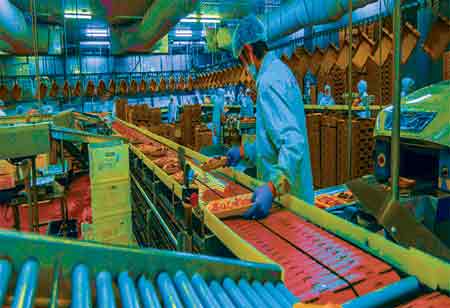Thank you for Subscribing to Food Business Review Weekly Brief
Tech Savvy Restaurants: Trends to Follow
The restaurant industry has been slow to adopt technology due to the COVID-19 pandemic and economic instability

By
Food Business Review | Tuesday, January 23, 2024
Stay ahead of the industry with exclusive feature stories on the top companies, expert insights and the latest news delivered straight to your inbox. Subscribe today.

Online table reservation technology is revolutionizing the dining experience by allowing customers to easily view available slots and make reservations. Providers manage waitlists, seating, dining preferences, and customer loyalty while collecting client data for market insights
Fremont, CA: The restaurant industry has been slow to adopt technology due to the COVID-19 pandemic and economic instability, but it has adapted to online ordering, self-checkouts, touchless payments, delivery, and pick-up. As a recession approaches, tech can help reduce costs, improve quality, and reimagine operations.
To stay competitive, restaurants must keep up with the latest trends and solutions.
Online Ordering Systems and Delivery Apps
The restaurant industry relies heavily on online food ordering and home delivery services, with the global online food delivery market estimated and expected to grow to billions by 2027. Third-party food delivery solutions are crucial for restaurants that cannot offer in-house services. As more diners prefer ordering directly, restaurants invest in integrated apps and online platforms to establish customer relationships.
Contactless Payment
Contactless payment is gaining popularity in the restaurant industry, with Juniper Research predicting that 53% of global transactions will be contactless in the next five years. The global value of contactless payments is projected to increase by 2024. This technology is quick, convenient, hygienic, and safe, making it essential for restaurants to invest in mobile and digital payment solutions.
Online Table Reservation System
Online table reservation technology is revolutionizing the dining experience by allowing customers to easily view available slots and make reservations. Providers manage waitlists, seating, dining preferences, and customer loyalty while collecting client data for market insights. The Experiences program showcases restaurants' best food and dining experiences. It offers unique experiences like line dancing lessons, tasting menus, and wine pairings, allowing customers to book their next dining experience easily.
Digital Kitchen ‘Boards’
Kitchen display systems (KDS) are digital menu boards that assist in taking customer orders and confirming their readiness. They are linked to the restaurant's POS system and work immediately upon order placement. They display orders based on priority, flag special dietary requests, track meal delivery times, and monitor inventory. Digital KDS improves communication, workflows, and accuracy, ensuring sustainable kitchen operations.
Automated Inventory Management Software
Automated inventory management software helps restaurants track stock, anticipate quantities, and schedule reorders more efficiently, reducing food waste, which costs the hospitality industry $100 billion annually. Partnerships with programs like Too Good to Go can save restaurants from wasting excess food, promoting environmental sustainability and time-saving measures.
See Also : Payment Processing companies






